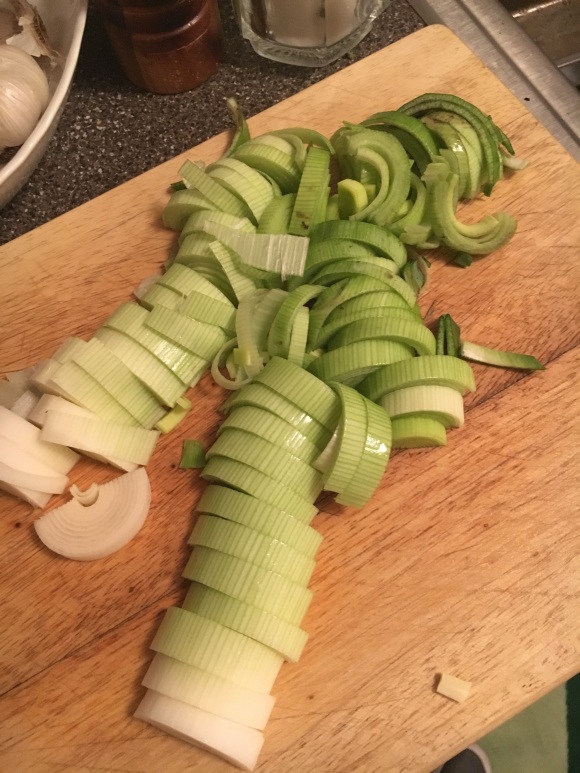
Summer Chicken Soup (Green)
Saturday was one of those days that was so hot and so humid that all I wanted to do was be inside, in a frigid air conditioned space, not thinking about the oppressive heat/humidity of the season. I don’t mind a few hot days in the summer, but it is not my default; I don’t walk out into the summer heat and say, “ahhh, this is perfect.” I like the chill. I like the shoulder seasons – spring and fall. More than anything, I like an excuse to eat soup.
My boo was feeling under the weather on Saturday – hadn’t eaten anything all day by the time I saw him, so when I asked what would make him feel better, I rejoiced when he said “I dunno…chicken noodle soup?” I immediately thought about onions, celery, carrots, some herbs, and big fat egg noodles. Then a trickle of sweat rolled down my back and I remembered – it’s freaking summer, not one of the other three seasons here in Chicago when it is appropriate to eat old fashioned chicken noodle soup.
My mind started racing – what is reasonable here? What can capture that good-hearted feeling without seeming out of place in the heat? I consulted my homecook resources – I texted some of my best friends. What would they do? It took them a little while to respond, and I was hungry, so I had already started the shopping list in my head and on my phone (using the the Clear app, which I cannot recommend enough), but the result was a list of summer chicken soup recipes that shall be the source of inspiration in the next couple of weeks:
- Asian-inspired, taking cues from Vietnamese pho, using ginger, garlic, lemongrass
- Tomato-based, with some spice
- Vichyssoise (not technically “chicken” soup, but I was glad of the reminder to make it)
I ended up doing what seems easy – swapping out the traditional ingredients in the old-fashioned soup for what’s more in season right now – kind of updating an old fave. Leeks instead of onions. Fresh peas and zucchini instead of carrots and celery. Fresh basil instead of thyme.
The result was maybe a little heavier than I wanted, but I think I can attribute that to the stock. I started with store-bought chicken stock (my go to: Kitchen Basics, though I may rethink this) and added bone in, skin-on chicken (two breasts, two leg quarters) to cook through, fortify the stock, and be the protein for the final soup. I probably should have used skinless chicken, since the usually welcome richness of the fat felt like too much for this version. Regardless, the result was delicious.
If anyone is interested in a full recipe, please let me know, but for the time being, here are a few prep notes:
- Per my friend Crissy’s suggestion years ago, I always cook pasta for soups separate to ensure that the noodles don’t get too mushy in leftovers. This technique also helps to cool down the finished soup as you are serving it so you can eat it almost immediately.
- To ensure that the zucchini didn’t get too soft in the cooking process, I cut them in generously sized chunks; I think this adds a nice bit of texture to the final soup (see photo, above)
- Clean leeks are happy leeks, and I can’t reiterate this enough. Once you eat a single pot of soup where you didn’t take time to clean them of sandy grit, you’ll see what I mean. I am here to tell you how to avoid this unfortunate circumstance without having to experience it in the first place.
- First, trim off the tough, fibrous green tops – you can use these to flavor stocks, but they never really cook up nicely enough to eat in soup or otherwise
- For this soup, I cut the leek lengthwise and then into quarter-to-half-inch halfmoon slices

- Break up the slices into a colander sitting a bowl of cold tap water – be sure that this combination is large enough to allow the leek pieces to separate and get clean

- Let sit for a few minutes and then pull the strainer out of the bowl of water; you’ll probably notice a bit (or a lot) of grit and sand in the bowl of water and NOT in your soup. Hurrah!



